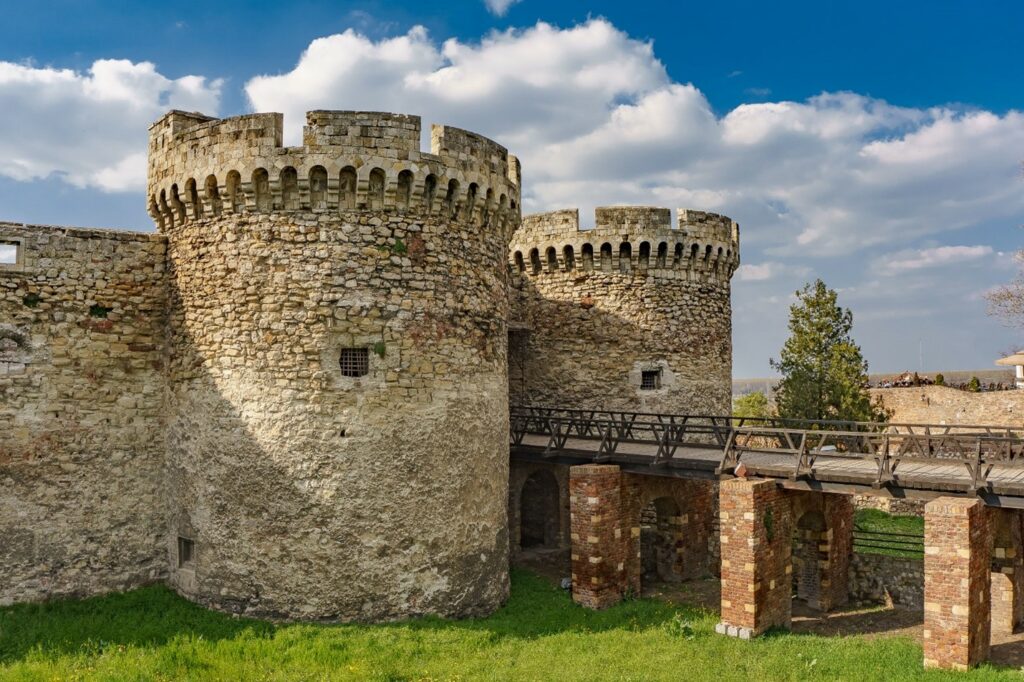
BRIEF HISTORY OF BELGRADE – Chapter: Bulwark of Christianity
As we announced, in the following blogs, we are sharing with the readers parts of our book “Brief History of Belgrade” signed by academician dr. Slavenko Terzic. We wrote the book keeping in mind those who do not know much about the history of Belgrade, or those who are looking for a good starting point for further independent study. In today’s blog, we are sharing a part of the chapter “The Bastion of Christianity: In the composition of Hungary, Byzantium, Serbia”. If you would like to read a whole chapter or a whole book, get in touch on social networks or via mail, and be part of our campaign to help talented children go to international competitions.
Bastion of Christianity: in the composition of Hungary, Byzantium, Serbia
The ancient Singidunum ended with the conquest by the Huns in 441, which was continued by the Eastern Goths and Heruli. In the following centuries, devastation and destruction by various conquerors took place one after another, among which the Avars who conquered Singidunum in 584 stand out. Attacks by Slavs were recorded already in the 540s, and mass settlement continued at the beginning of the 7th century. Already around 630, Byzantine Emperor and famous chronicler Constantine Porphyrogenitus mentions the Serbs in Belgrade. The city appeared under its today’s Slavic name – Belgrade (White City) – in the 9th century. After Roman rule, over the following few centuries, Belgrade was ruled by Bulgaria, Byzantium, and Hungary.
In the following centuries, the struggle for power over Belgrade and its surroundings was especially pronounced between Hungary and Byzantium. Both countries gave the city their urban and cultural stamp during their rule over Belgrade. During Byzantine Emperor Manuel I Komnenos, a strategically important fortress was built on the most important part of the Kalemegdan plateau. In the spirit of Byzantine military architecture, several towers and new ramparts were built in the city, and Emperor Manuel I Komnenos himself stayed in Belgrade in 1163 and 1165. With the fall of Constantinople into the hands of the Crusaders in 1204, Byzantium experienced a sharp decline, and the city was under Hungarian rule with minor interruptions throughout the 13th century. As in previous and later centuries, Belgrade was an important centre on the road that connected Central Europe with the Near East, and, naturally, many travelling salesmen and important historical figures passed through it. In 1147, French King Louis VII “with his lavish and colourful entourage” stayed in Belgrade, and a little later, in 1189, German Emperor Frederick (Friedrich) I Barbarossa.

Belgrade first came under Serbian rule in the 13th century – in 1284, when Hungarian King Stephen V handed over Mačva and Belgrade to his son-in-law, Serbian King Dragutin – who was married to King Stephen’s daughter Katarina. Belgrade was under the rule of King Dragutin for over 40 years, but it came under the control of Hungary again in 1319 because it was always of exceptional strategic importance for Hungary as well as for other countries. In his time, several Orthodox churches were built in and around Belgrade, including the Cathedral Church, which kept the precious silver icon of the Mother of God, which the Serbs took with them in 1521 after the Ottoman conquests of Belgrade and forced expulsion to the outskirts of Constantinople. Belgrade came under Serbian rule again at the beginning of the 15th century (1403 or early 1404) on the basis of an agreement between Serbian Despot Stefan Lazarević and Hungarian King Sigismund. Under the rule of Despot Stefan, Belgrade became the capital of Serbia and, at the same time, an important political and economic centre of the Serbian state. People from all parts of Serbia and Bosnia and coastal cities such as Kotor and Dubrovnik moved to the new capital. It was a powerful trading colony of the people of Dubrovnik. During more than two-decades-long rule of Despot Stefan, the most prominent Serbian fortress was built in the period before the arrival of the Ottomans. The Serbian capital was divided into the Upper Town, located on the Kalemegdan hill, the place of the former Roman military camp, and the Lower Town, which stretched below the Kalemegdan hill. The tremendous architectural activity of Despot Stefan is evidenced by the Nebojša Tower, the most important tower of medieval Belgrade, which played an exceptionally significant role in the city’s life. Near the Nebojša Tower, which no longer exists in the Upper Town, was the court of the Serbian ruler. Some of the strong ramparts erected during the time of Despot Stefan have been preserved to this day, but that part of the fortress where his court once stood was eventually destroyed in 1690 during the battles for Belgrade, between the Austrians and the Ottomans.”

